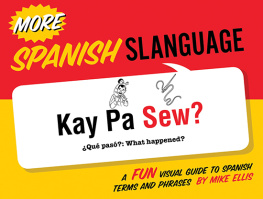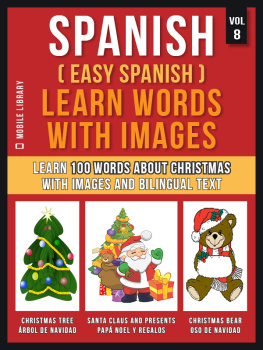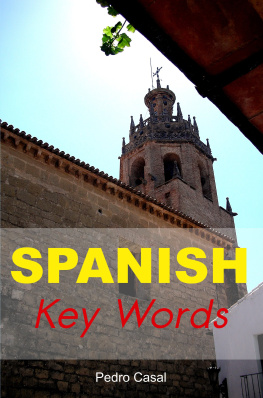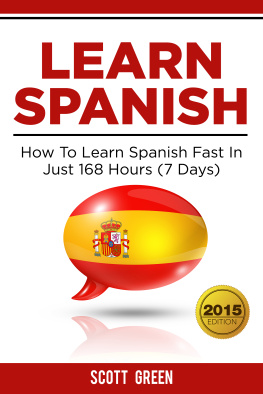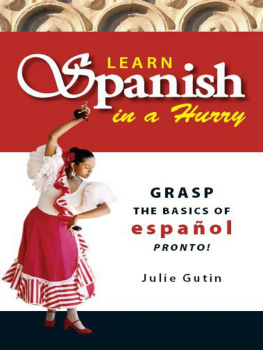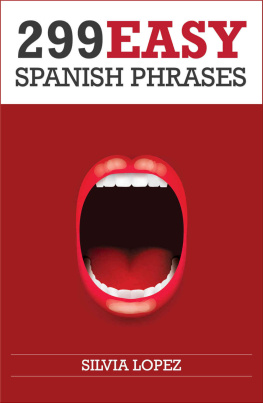
Quin es mi vecino?
Who Is My Neighbor?
Learning Spanish as Church Hospitality:
A Worship-Centered Curriculum
Students Manual
Joyce Carrasco, MTS
Ruth Cassel Hoffman, PhD
Ngoc-Diep Nguyen, PhD
QUIN ES MI VECINO?
WHO IS MY NEIGHBOR?
STUDENTS MANUAL
Copyright 2015 by Abingdon Press
All rights reserved
No part of this work may be reproduced or transmitted in any form or by any means, electronic or mechanical, including photocopying and recording, or by any information storage or retrieval system, except as may be expressly permitted by the 1976 Copyright Act or in writing from the publisher. Requests for permission can be addressed to Permissions, The United Methodist Publishing House, 2222 Rosa L. Parks Blvd. P.O. Box 280988, Nashville, Tennessee 37228-0988, or e-mailed to .
This book is printed on acid-free paper.
All scripture quotations are taken from the Dios habla hoy, la Biblia versin popular, 1966, 1970, 1979, 1983 copyright Sociedades Bblicas Unidas. Used by permission. All rights reserved. Maps, copyright 2015 Thinkstock.com
ISBN 978-1-5018-0365-9
15 16 17 18 19 20 21 22 23 2410 9 8 7 6 5 4 3 2 1
MANUFACTURED IN THE UNITED STATES OF AMERICA
Content
Foreword
What are you doing this evening? the woman who cuts my hair asked me.
Im going to a Spanish-as-Second-Language class.
Whats that? she asked.
I explained to her that I wanted the people in the churches that I serve to learn to speak Spanish so that they can be more hospitable toward their neighbors. Not only in Illinois but throughout the United States, there is a large and/or growing population of Spanish-speaking people. While most of these new immigrants are eager to learn English and attend English classes, its hospitable to at least attempt Spanish when we connect with them in our communities and in our churches.
Wow! I never heard of anything like that! Thats cool! she said. Then she added, Id like to do that. I assured her that it wasnt exclusively for United Methodists but anyone who was interested.
This represents a typical conversation when talking about the Spanish-as-Second-Language classes being held in the Northern Illinois Annual Conference. After coming to Northern Illinois, I called together a small group of United Methodist linguists with my vision of a curriculum. I imagined it to be an adult learning experience that would enable us to speak if only minimally, sing with greater confidence, and pray together in our culturally diverse communities, churches and annual conference. These dedicated United Methodist linguists developed this curriculum that can assist us in being buenos vecinos (good neighbors).
The orientation for teachers and host church representatives is very important so that those who teach understand the spirit of the curriculum. Its also important that the host churches provide hospitality to those who come; many times people would come from other churches and from the community at large.
I went to the first orientation for the teachers and host church representatives after I signed up for my own six-week course but I was anxious about being able to learn any Spanish. I have a foreign language anxiety. I learned at the orientation for the teachers and hosts that we would learn Spanish the way a child learns a language; not by conjugating verbs or memorizing long lists of words. We learned our first language by listening to it, seeking to comprehend it even when we didnt totally understand every word, and then slowly beginning to speak it... very slowly. Speaking is the hardest part and usually language courses quickly force adults into speaking before theyre really comfortable doing it.
My foreign language anxiety was heightened again as I went to my first class but it was quickly reduced as the teacher guided us through the lesson plan. This curriculum is a model of adult learning with many participatory activities which resulted in lots of fun and laughter.
After attending several classes, I was privileged to attend the installation of the presiding bishop of the Evangelical Lutheran Church on the campus of the University of Chicago. And wouldnt you know? The person sitting next to me was the only Lutheran woman bishop in Latin America. There were no other Spanish-speaking persons around her. She spoke very little English and I spoke very, very little Spanish but she was patient and kind with me and I know she appreciated that I even tried. These experiences happen all the time in our daily lives, in the life of our church, and in our communities. It will happen to you and when it does, youll be able to demonstrate hospitality through a few kind words!
This curriculum has been a labor of love by the women who have developed, tested and revised it over the last two years and I highly recommend it even (or maybe especially) if you have foreign language anxiety. In the classes I took, there were people with various levels of ability to speak Spanish already and this added to the class immensely. Whether you know no Spanish whatsoever or you took Spanish in high school (and its been years since you used it), youll benefit from this curriculum.
All of us live in communities where our neighbors are Spanish-speakers. It says a lot about the openness of our hearts, minds and doors when we speak a word to them, even if it is halting and without the right verb conjugation...
Bishop Sally Dyck
Lesson 1
La familia
1. New vocabulary


2. Some sentences you can make with words you have been introduced to
Me llamo _____, y usted? My name is _____, and yours?
Es mi mam. Ella se llama _____. Thats my mom. Her name is _____.
Es mi pap. l se llama _____. Thats my dad. His name is _____.
Es mi esposo/a. l/Ella se llama _____. Thats my husband/wife. His/her name is _____.
Es mi hijo. l se llama _____. Thats my son. His name is _____.
Es mi hija. Ella se llama _____. Thats my daughter. Her name is _____.
Son mis abuelos. Ellos se llaman _____ y _____. Those are my grandparents. Their names are _____ and _____.
Son mis hermanos, ____ y _____. Those are my brothers, _____ and _____.
Es mi hermana _____. Thats my sister.
Hola! Pase(n)! Sinte(n)se aqu! Hi! Come in! Sit here!
Es su mama, s? Cmo se llama ella? etc. Thats your mom, right? What is her name? etc.
Es la una. Son las dos, etc. Its one oclock. Its two oclock, etc.
En mi familia, tengo ___ personas. In my family, I have _____ people.
Tengo una mama y un pap. I have a mom and a dad.
Tengo dos hermanos: un hermano y una hermana. I have two siblings: a brother and a sister.
Cuntas personas tiene usted en su familia? How many people do you have in your family?
3. Songs
a. I have a joy, joy, joy, joy, down in my heart (Where?)
Yo tengo gozo, gozo en mi corazn, (Dnde?)
Next page

